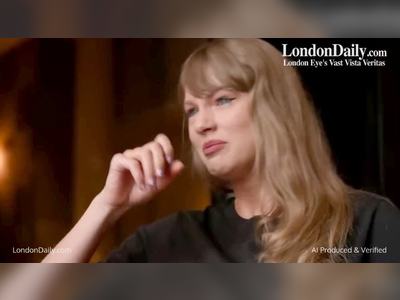The icy side to Hong Kong history
The humid embrace of Hong Kong’s summer is heavy and hard to shrug off. The best antidote to such sultriness is found in a thick-stemmed soda glass half-filled with iced red bean, a deliciously syrupy mixture of sweetened, softened adzuki beans topped with evaporated milk and poured over crushed ice. It’s a Cantonese classic thought to be inspired by a popular Chinese dessert and given a Western twist in its diner-style presentation – and is best enjoyed beneath the whirling ceiling fans of one of the city’s bing sutt cafes, where Hongkongers have gone to cool down for decades.
But it was not always so simple to escape the heat in Hong Kong. When the region was ceded to the British in 1841, the wealthiest colonists built large, shaded mansions on Victoria Peak, which offered relative respite from the muggy conditions, and they adorned their elegant dinner tables with tinned foods imported from their homeland.
But for most of Hong Kong’s British colonisers, there was only one solution to the territory’s stifling summers: ice. Accustomed to the cooler climes of their homeland where they had access to ice houses for food storage, the acquisition of ice was of immediate importance.
In the 1840s, however, there was no way of freezing water in the humid city. Instead, ice had to be imported from North America, brought over on large ships by Boston’s “Ice King”, Frederic Tudor, where it was stored at the settlement’s first ice house. Completed in 1845, the Ice House Company’s building was well-situated on the water’s edge – which has since retreated some 700m through land reclamation – but the enterprise was relatively short-lived, and by 1850 it had closed.
For the following decade, ice entered Hong Kong from northern China, where, much like in North America, it could be harvested from frozen rivers and lakes. By the early 1860s, the Tudor Ice Company resumed importing ice to the colony, around the same time a second cold storage warehouse was built across the road from the original. Today, this location is better known as “Ice House Street” and is situated in the heart of Central, Hong Kong’s financial and retail nexus.
However, it was not until 1874 that Hong Kong began producing the commodity the British so craved, when Scottish engineer John Kyle obtained a patent for the colony’s first ice machine and, in partnership with compatriot William Bain, set about selling locally made ice using vapour-compression refrigeration systems from a plant in East Point (present-day Causeway Bay). As automation eased ice production, larger companies soon became interested in selling it, and Jardine Matheson and Company (now known as Jardine Matheson Holdings and one of Hong Kong’s major conglomerates) bought out Kyle and Bain in the late 1870s.
Although neither of the original ice houses are still standing, you can walk to the top of Ice House Street on Lower Albert Road to see a rare architectural reminder of Hong Kong's early colonial past: a striking low-rise brick and stucco building that stands out amid a cityscape of glass and steel. Now home to the Fringe Club and Foreign Correspondents’ Club, a non-profit arts organisation and a media-focused private members’ club respectively, it was built in 1892 as the depot of the Dairy Farm, a major food retailer that supplied ice and dairy products to nearby hospitals and local residents, almost all of whom would have been affluent expats.
In fact, ice remained exclusively an expatriate concern for decades. As cold storage became more common in affluent households, imported meat and fruit began to grace British banquets, washed down with a well-chilled drink. Local diets, however, comprised fresh seafood, meat and vegetables, ingredients that required no refrigeration. In Chinese culture, then as now, hot water is believed to hold health benefits and is said to improve digestion and blood flow; cold water is rarely drunk.
But the pursuit of ice was not to remain a British endeavour forever. In the early 20th Century, it eventually entered Cantonese cuisine – and therefore culture – through bing sutts (literally, “ice rooms”), humble cafes where locals would go to enjoy an iced drink.
“People tend to forget now, but we live in a Hong Kong that couldn’t exist without air conditioning,” said Daisann McLane, who runs food and culture tours with her company, Little Adventures in Hong Kong. “At that time, electricity was scarce and nobody had refrigerators, so, the idea that in the height of summer in Hong Kong you could walk into a place and get a cold drink – it was a huge draw.”
At the peak of their popularity in the 1950s and ‘60s, there were bing sutts throughout Hong Kong, and they played an integral role in the fast-industrialising city. For the hundreds of thousands of Chinese labourers who returned to Hong Kong after the 1941-45 Japanese occupation, or who arrived in the colony to man its factories, bing sutts offered more than just a place of respite from a hard day’s work. The cool cafes also catered to their tastes, serving cold drinks like Hong Kong-style iced red bean alongside affordable Cantonese takes on Western food, such as pineapple buns – a sweet treat with a crunchy, golden topping that was conceived for local tastes and appealed for its perceived exoticism.
But bing sutts were not exclusively enjoyed by workers. “Bing sutts were places for a family treat at the weekend or the first day of the month when father got the pay cheque,” said Patricia Chiu, honorary assistant professor at The University of Hong Kong’s Department of History. “Children were treated with these ice drinks and French toast or sandwiches. The good thing was that they could be divided and shared among a large family, with two or three kids sharing a drink through a few straws.”
Bing sutts could be easily recognised because they advertised their wares in a particularly unique way.
“The type of refrigerators used by bing sutts were designed to be put in the window,” said McLane. “That’s what they’re selling, they’re selling ‘cold’.”
John Carroll, associate dean of the Faculty of Arts at The University of Hong Kong, agrees. “Even into the early 1970s, many Hong Kong people didn’t have refrigerators – many of the kids I knew when I was growing up here did not – so going to the bing sutt would have been one of the only ways to get an icy drink,” said Carroll, who spent his childhood and teenage years in North Point and Causeway Bay. “And even then, most people lived in small flats, so any excuse to meet in a restaurant or cafe would have been welcomed.”
Today, only a handful of bing sutts survive, and those that do have evolved. Hong Kong licensing laws of the mid-20th Century dictated that the distinctive, cold-fronted cafes serve only drinks and food that did not require cooking, but as tastes changed, bing sutts were forced to expand their offerings or face obsoletion. Many faded out with the rise in living standards in the 1970s that saw air conditioning become a common convenience at home, while others were usurped by the cha chaan teng, a Western-style diner still common on the streets.
However, the surviving bing sutts, still distinguishable by their fridge-fronted facades, offer a window into Hong Kong’s unique culinary culture that fuses Eastern and Western influences through drinks like iced red bean, which recalls the popular Chinese dessert red bean soup but was given a European touch with the addition of shaved ice.
Among them, Guong Shing Ice Café in Sheung Shui, a New Territories town near the border with China, makes a mean iced red bean drink; while Cheung Sha Wan’s Sun Wah Café in Kowloon is renowned for its melt-in-the-mouth egg tarts. On Hong Kong Island, an unassuming facade reveals little of the treasures awaiting inside Luen Wah Café, where the simple sandwich is elevated to culinary excellence thanks to unbelievably fluffy eggs folded between two slices of crust-free white bread.
As nostalgia for “old Hong Kong” has risen in recent years, the city has seen a resurgence of the cold drinking dens – most high-profile of which is a collaboration between Douglas Young, co-founder of local design-based lifestyle store Goods of Desire, and Starbucks. In the coffee chain’s Duddell Street location, itself an ice pick’s toss from the site of the city’s first ice houses, retro tiling and Formica tables recall an old-school bing sutt. However, nothing can beat the original, as Sheung Wan’s Hoi On Cafe’s perpetually packed tables nearby demonstrate.
Hoi On Cafe (which translates to “sea cafe”, because, much like the original ice houses, it used to be on the waterfront) is one of the last remaining bing sutts to advertise its offerings with a fridge in the window. Opened in 1952, and still run by the children of the original owners, the popular cafe is noticeable for its condensation-covered façade, behind which are bottles of soy milk on one side and pineapple buns and egg tarts on the other. To enter the impossibly small space is to travel back in time. Construction workers and students, office staff and confused tourists pack the cheery crimson-coloured booths and wooden stools jumbled around plastic tables, sipping red bean ice beneath whirling ceiling fans.
The British might have introduced ice to the colony, but it was the Hongkongers who democratised it, making cold drinks accessible to all.
















